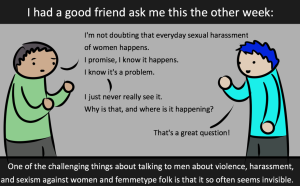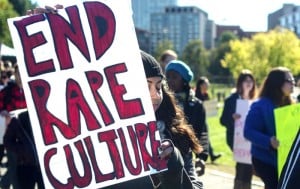
Source: iStock
I cringe a little when someone tells me they’re planning to visit Indian Country.
Great, I think. Another drive-by cultural tourist who’s going to come back an expert on dreamcatchers and gambling.
Indian Country, by the way, generally refers to those areas of the United States with concentrated populations of Native people, including federally recognized tribal communities (aka reservations), urban Native centers (parts of Denver, Minneapolis, Seattle, Albuquerque, and so on), and states with sites or parks associated with traditional tribal territories (like South Dakota, Arizona, Wisconsin, and Oklahoma).
What’s interesting to me about some folks who travel Indian Country is they couldn’t care less about Native people or issues in the every day sense, but once you tell them some things are off limits, like ceremony, it’s all “I’m an American and this is America!” colonizer rhetoric (true story).
Or maybe they respect ceremony boundaries, but instead of supporting local tribal economies, they buy those aforementioned dreamcatchers and smudge kits from a non-Native producer because cheap.
There are lots of ways tourists flub opportunities for respectful cultural exchange, making Natives weary of visitors.
However, because tourist-friendly industries like outdoor activities and the arts are so central to Native economies, tourism is a needed and often valued part of life in Indian Country.
The following is a series of examples noting the kind of oppressive mindsets Native people come across when interacting with tourists – like cultural appropriation and outsider entitlement – and suggestions on how to travel through Indian Country in respectful and purposeful ways.
1. ‘Hey Kids! Let’s Take a Detour and Visit That Indian Reservation!’
There are a lot of great roadside attractions meant to entice tourists into stopping for a spur-of-the-moment visit. You can wander around, take cheesy photos, use the bathroom, and be on your way.
For some reason, however, tourists have this attitude that they carry an all access pass to go wherever they want, whenever they want.
Stop doing that.
I have a friend who lives on a Pueblo in New Mexico who said he woke up one summer morning with strangers walking around his adobe home. They left only when he threatened to call the police, and had the audacity to blame the incident on him: “Well then don’t leave your doors unlocked.”
These attitudes are held over from the time of Manifest Destiny, when national progress meant pushing indigenous people off their land in whatever genocidal way worked best.
Tourists who walk unannounced and uninvited into a Native person’s home reflect present-day notions that Native property is there for the taking, just waiting for a bright, white, modern light to shine upon it.
Recently, I met a few San Carlos Apache warriors protesting a land swap between the federal government and a mining company threatening their sacred Oak Flat land. They told me losing Oak Flat would be like having their heart ripped out, and worse.
As a member of the Očéti Šakówiŋ, a society with origins and holy places located in the resource-rich Black Hills of South Dakota, I know how it feels to watch the traditional and legal lands of your people be mined and vandalized.
This may help explain why some Native people are hesitant to welcome visitors. Invading people’s homes and voting for lawmakers who destroy places of religious significance are hostile maneuvers reminiscent of a time not so long ago when Native property and lives were there for the taking.
These are not actions of friendly, caring guests.
So what’s a good tourist to do? Homework well in advance of your planned visit. Consider:
What places are open to the public?
If an area is open to the public, like a national park or forest, what is its indigenous history and connection? Please Google.
Are you allowed to take photos? If so, are there limitations?
Can you bring alcohol into the community?
What vendors should you purchase products/souvenirs/collectibles from to sustain the local tribal economy?
Answers to these questions and more can usually be found on a tribe’s official website, or by calling the tribe’s chamber of commerce or main government offices. Keep calling around until you get an answer.
Remember that the 567 federally recognized tribes in the U.S. are sovereign nations, meaning they each control their own governments, laws, and affairs, among other things. Roughly 320-some of those tribes are attached to reservations, and they regulate who comes and goes on their land.
And to be clear: Homes are not public spaces. Even if there’s a welcome mat under the front door, do not enter or assume you can go in and explore.
You’d think that goes without saying, but as evidenced by my friend’s story, the notice is obviously needed.
2. ‘I Want to Experience the Full Extent of Native Culture through Ceremony’
We discussed home invasion. This goes beyond that.
Within tribal communities, whether you’re on a reservation or in an urban area, certain places and spaces and information is off-limits to non-tribal members.
Ceremony, sacred sites, and information about the two fall into that category.
I’m not even sorry about this. Not one little bit.
Because it wasn’t forty years ago that Native people were still being prevented from openly – legally – practicing our spirituality.
I don’t know if you can fully comprehend what that means.
Outsiders, with no Native connection and/or no active participation in advocating for Native rights, demand access to spiritual practices my mom is young enough to remember not being allowed to observe.
Furthermore, my Lakota people were massacred at Wounded Knee for their faith. Many other tribal nations were similarly persecuted.
The American Indian Religious Freedoms Act of 1978 (1978!!!) allowed Natives to practice our spirituality, speak our languages, access sacred sites, possess sacred objects, and generally reclaim our spiritual identities without government control and restraint.
So, no. You can’t have our spirituality, no matter how much you’re willing to pay.
Native people are still figuring out how to return to our spiritual selves after 500-plus years of systemic suppression and the last thing we need is interference from New Age appropriators.
We are not missionaries, nor do we evangelize. Ours is not a gospel to spread or prove it is better than others. We do not have to share and you have no right to ask us to.
If I seem angry, I am.
I have relatives who were forced into boarding schools where they were beaten – and worse – for speaking their Lakota language. And there are sacred lands my Lakota people can’t access when pitted against motorcycle rallies and hippie gatherings.
Many in my generation and younger feel disconnected from our full, spiritual selves because of our weakened grasp of the language and our inability to live in our traditional homelands.
And yet where I live in Colorado Springs, a newly built spa can indulge patrons with a pipe ceremony or I can find “inipi” (a Lakota word for sweat lodge ceremony) gatherings on Meetup led by non-Natives if I have an “open heart.”
The people who attend events like these are often cultural tourists and drive-by looky-loos with absolutely no desire to understand or involve themselves in the rich spiritualities, complex histories, or modern day issues of actual Natives.
I’m not saying I haven’t taken non-Native people I care about with me to experience inipi or other ceremony, but I also know these people are strong Native allies and would never take what they learned to lead ceremony on their own.
The best advice I have here for tourists is to seek out public events sanctioned by the tribe you’re visiting. Powwows are an excellent way for visitors to experience tribal culture, so long as the rules of etiquette (which can vary from tribe to tribe, so ask) are followed.
3. ‘I Watched a Movie About Native Americans and Now Know Everything About Them’
It amazes me how widespread this mindset is. You watch Dances With Wolves, and suddenly you’re an expert in thousands of unique tribal histories and cultures.
That movie came out more than 25 years ago and tourists still flock to South Dakota – where it was filmed – for a chance to experience the friendly, stereotypical Natives Lt. John Dunbar lived among in the movie.
From the stories I’ve read out of the Quileute Nation in La Push, Washington, the Twilight book and movie series brought lots of attention from tourists wanting a taste of vampires and werewolves.
(Spoiler alert: Native Americans aren’t werewolves. Werewolves are imaginary and Natives are living, breathing, existing humans.)
When fictionalized Natives trend in pop culture, the resulting stampede of non-Natives clamoring for their share of the popularity parallels Abraham Lincoln’s Homestead Act of 1862, when Native territory was put up for grabs to any pro-American (and non-Native) person who claimed it, including recently freed Black people and women.
The message from Day One has always been Native property – our images, land, and culture – is up for grabs, so much so that even movie buffs become experts over actual Native people.
A non-Native conference attendee told me a few years back that I smudged incorrectly because that’s not how she saw it performed in a documentary. She received major side-eye from me in response and conceded that maybe different tribes do things differently.
It’s not that movies about Natives aren’t entertaining or that documentaries aren’t valuable.
In fact, I believe more movies and documentaries are needed because they have gateway potential for folks (Native kids, especially) truly interested in learning about the thousands of individual and unique tribes surviving today.
But when you’re searching for tribal communities to visit, keep in mind we’re contemporary people with modern issues that go beyond anything you’ve read in a book or seen on the big screen.
4. ‘Where’s the Casino?’
The Native Stereotype Trifecta: We live in tipis, wear headdresses, and own casinos. There’s a ton of stereotypes and myths out there, but these often represent the Big Three.
I have a white friend who went gambling at the Foxwoods Resort Casino in eastern Connecticut. The Mashantucket Pequot Tribal Nation owns the casino.
She lost money at the slots and because that’s pretty much the only interaction she’s had with a Native enterprise or community, she’s convinced all Natives who complain about poverty are liars.
Many people believe casinos have made all Natives rich. Let me be the first to tell you this is (unfortunately) not true.
Oh, how I wish it were, though.
Fewer than half of all federally recognized tribes own casino operations, and just a handful are huge, giant successes in that their tribal members never have to worry about poverty.
And some of those casinos, like Foxwoods, are struggling to return from billion-dollar bankruptcies.
The fact is, Natives communities are statistically the poorest in the US, with unemployment reaching well above 80% on some reservations, and 1-in-4 Natives living in poverty nationwide.
Poverty exacerbates all other issues affecting Native families and communities, including higher rates of disease, lack of educational attainment, shorter life spans, and more.
Go ahead and try your luck at the casino, if the tribe you’re visiting has one. But also sink your money into the tribe’s other offerings.
Foxwoods, for instance, has the fantastic Mashantucket Pequot Museum & Research Center on its campus, which I visited with my family a few years ago.
Here’s a sampling of other great places to visit in Indian Country:
- Cherokee Heritage Center in Tahlequah, Oklahoma
- Heard Museum in Phoenix, Arizona
- Indian Pueblo Cultural Center, Albuquerque, New Mexico
- Little Bighorn Battlefield National Monument, Crow Agency, Montana
- National Museum of the American Indian in Washington, D.C.
- Suquamish Museum, Suquamish, Washington
- Wounded Knee Museum in Wall, South Dakota (then pay your respects at the massacre site)
5. ‘I Will Purchase Cheap, Tribally Inspired Items Because I Am a Savvy Consumer, But Still Want Souvenirs’
Border towns are non-Native communities neighboring reservations (think Santa Fe, New Mexico; Rapid City, South Dakota; or Bemidji, Minnesota).
These towns are tourist magnets thanks to their proximity to tribes and ability to accommodate travelers in ways reservations can’t – with Starbucks, McDonald’s, choice of overpriced hotels, and choice of underpriced tribal-inspired souvenirs.
Border towns benefit tremendously from cultural appropriation in that they can exploit Native images, products, or practices for profit. These items are often inauthentic (not Native made), and sales do not profit Native people, communities, or causes.
I’m thinking of all the plastic tomahawks, chicken-feather headdresses, and rear-view mirror dreamcatchers proliferating the border town souvenir markets.
Who really benefits when you buy cheap (and sometimes really offensive) products? It isn’t you, not in the long-run, anyway.
Mass-produced items manufactured by non-Native companies will be cheaper than what you’ll find at museums, art galleries, powwows, or street market vendors, sure, but big box retailers often outsource jobs, pay workers low wages, and may even use sweatshops.
When you buy an authentic Native item, like a piece of Pueblo pottery, you are supporting not just the artist, but skills that were passed down through generations and will be shared with generations to come. You are supporting tribal sovereignty and tribal economies.
As a journalist, I’ve spoken to several Native artists. The common thread among all of them is this: Their work is part of their identity and they put their heart and soul into it.
These artists will set aside a project if they have negative thoughts or are having a bad day, so that those energies don’t seep into their art. Work resumes when the artists are in a positive state of mind.
Why wouldn’t you want to pay a bit more for something like that?
***
The fact is, tourism is an excellent source of revenue for Native communities and many tribal people depend on tourism dollars to survive.
But keep in mind no VIP pass exists in Indian Country; there are places you can’t go, ceremonies you can’t see, pictures you shouldn’t take, and information you can’t have.
Being a responsible, respectful tourist is key to making your vacation enjoyable for both you and the people allowing you to experience their lands and culture.
Purchasing work – like art, food, and services – from authentic Native producers puts money into tribal economies and encourages Native entrepreneurs. Likewise, learning about Native history and current issues from reputable, public spaces – like tribal museums and tour guides – will help you become a better Native ally.
It might not be the stereotypical Wild West show you were hoping for, but ridding yourself of oppressive behaviors and making these small changes to your summer travel plans will still provide you a learning adventure in Indian Country.
[do_widget id=’text-101′]
Taté Walker is a Contributing Writer for Everyday Feminism. She is Mniconjou Lakota and an enrolled citizen of the Cheyenne River Sioux Tribe of South Dakota. She is a freelance journalist who lives in Colorado Springs. She blogs at Righting Red and can be reached on www.jtatewalker.com. Follow her on Twitter @missustwalker.
Search our 3000+ articles!
Read our articles about:
Our online racial justice training
Used by hundreds of universities, non-profits, and businesses.
Click to learn more




















